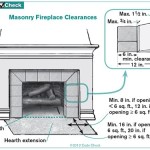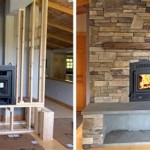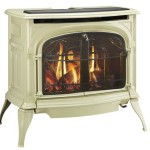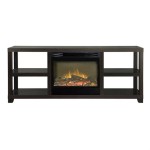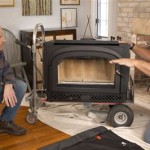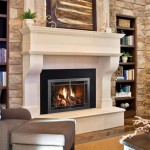Corner Stone Fireplaces: A Comprehensive Guide to Design, Installation, and Benefits
Fireplaces have transitioned from simple heating apparatuses to sophisticated focal points in residential and commercial spaces. Corner Stone Fireplaces represent a specific design approach focused on integrating the fireplace into a corner area, maximizing space utilization and creating a visually appealing architectural feature. This article delves into the various aspects of Corner Stone Fireplaces, including their design considerations, installation procedures, benefits, and maintenance requirements.
Design Considerations for Corner Stone Fireplaces
The design process for a Corner Stone Fireplace requires careful consideration of several factors to ensure optimal functionality and aesthetic coherence. One primary factor is the size of the room in which the fireplace will be installed. A proportionally sized fireplace will enhance the space, while an inappropriately sized unit can overwhelm or underwhelm the area. Room dimensions dictate the ideal height, width, and depth of the fireplace structure.
Another crucial aspect is the architectural style of the building. The fireplace design should complement the existing architectural features, whether it's a modern, traditional, or rustic aesthetic. Material selection plays a pivotal role in achieving this harmony. Stone, brick, tile, and wood are common materials used in Corner Stone Fireplaces, each offering a unique texture and visual appeal. The choice of material should align with the overall design theme of the room.
Ventilation is a fundamental design consideration for wood-burning fireplaces. Proper venting ensures efficient smoke removal and prevents indoor air pollution. The design must adhere to local building codes and safety standards, typically involving a chimney or flue system that meets specific height and diameter requirements. For gas or electric fireplaces, ventilation requirements are generally simpler, often involving direct venting or vent-free options.
The fuel type selection influences several design elements. Wood-burning fireplaces require a firebox designed for safe and efficient combustion, as well as a storage area for firewood. Gas fireplaces necessitate a gas line connection and a properly installed burner system. Electric fireplaces, on the other hand, require an electrical connection and offer ease of installation and operation.
Aesthetics extend beyond the materials used. Mantel design, hearth construction, and surround details contribute significantly to the overall appearance of the Corner Stone Fireplace. The mantel can serve as a decorative shelf for displaying artwork or personal items, while the hearth provides a protective barrier around the firebox. The surround, the area immediately surrounding the firebox opening, can be customized with various materials and patterns to create a unique focal point.
Installation Procedures for Corner Stone Fireplaces
The installation process for a Corner Stone Fireplace is a complex undertaking that typically requires professional expertise, particularly for wood-burning and gas-fueled units. Improper installation can lead to safety hazards, functional issues, and code violations.
The initial step involves preparing the corner area where the fireplace will be located. This may include removing existing walls or structures, leveling the floor, and ensuring adequate structural support. For wood-burning fireplaces, the construction of a foundation pad is essential to support the weight of the fireplace and distribute it evenly across the floor.
The next stage comprises the construction of the fireplace structure itself. For masonry fireplaces, this involves laying bricks or stones according to the predetermined design. Mortar is used to bind the materials together, creating a solid and fire-resistant structure. The firebox, the chamber where the fire burns, must be constructed with refractory materials capable of withstanding high temperatures.
Ventilation system installation follows the firebox construction. For wood-burning fireplaces, this typically involves installing a chimney or flue system that extends from the firebox to the outside of the building. The chimney must be properly insulated to prevent heat loss and condensation. For gas fireplaces, a direct vent system removes combustion gases through a pipe that exits directly through the wall or roof.
Gas line installation for gas fireplaces requires connecting the fireplace to an existing gas line. This must be done by a qualified gas technician to ensure proper connection and leak-free operation. The gas line must be properly sized to provide adequate gas pressure to the burner system. A shut-off valve should be installed near the fireplace for safety purposes.
Electric fireplaces require wiring to an electrical circuit. The circuit must be rated to handle the power requirements of the fireplace. A dedicated circuit is often recommended to prevent overloading. Wiring should be done in accordance with local electrical codes.
The final stages of installation involve finishing the fireplace surround, installing the mantel, and constructing the hearth. These elements are typically customized to match the overall design of the room. The hearth provides a protective barrier around the firebox, preventing sparks and embers from damaging the surrounding floor. The mantel serves as a decorative shelf and can be constructed from wood, stone, or other materials.
Following the installation, thorough testing is essential to ensure proper operation and safety. For wood-burning fireplaces, a test fire should be conducted to verify proper drafting and smoke removal. For gas fireplaces, a leak test should be performed to ensure that there are no gas leaks in the system. Electrical fireplaces need to be tested to verify proper heating and fan operation.
Benefits of Corner Stone Fireplaces
Corner Stone Fireplaces offer numerous benefits, both functional and aesthetic. Beyond their primary function of providing warmth, they enhance the ambiance of a room and increase property value.
One key benefit is space optimization. Corner placement allows efficient utilization of often-unused corner areas, maximizing floor space and creating a more open layout. This is particularly advantageous in smaller rooms where space is at a premium. Corner fireplaces can make a room feel larger and more inviting.
A significant advantage is aesthetic appeal. A well-designed Corner Stone Fireplace serves as a striking focal point, adding architectural interest and visual warmth to the room. The fireplace can be customized to match the existing decor, creating a cohesive and stylish living space. Fireplaces often become a central gathering place for family and friends.
Increased property value is another substantial benefit. A fireplace is a desirable amenity for many homebuyers, adding perceived value to a property. A Corner Stone Fireplace, with its unique design and space-saving advantages, can be an especially attractive selling point. It demonstrates attention to detail and thoughtful design, qualities that appeal to discerning buyers.
Energy efficiency can be enhanced through certain Corner Stone Fireplace designs. Modern fireplaces often incorporate features such as sealed combustion chambers and heat-circulating fans, improving heating efficiency and reducing energy consumption. This can lead to lower heating bills and a reduced carbon footprint. Energy-efficient fireplaces contribute to a more sustainable lifestyle.
Beyond purely functional and economic benefits, the emotional impact of a fireplace cannot be ignored. The presence of a fireplace creates a sense of comfort, relaxation, and well-being. The flickering flames and gentle warmth evoke feelings of nostalgia and security. Fireplaces provide a cozy and inviting atmosphere, perfect for relaxing evenings or social gatherings.
Corner Stone Fireplaces offer versatility in design and fuel options. They can be adapted to various architectural styles and can utilize wood, gas, or electric fuels. This flexibility allows homeowners to choose the fireplace that best suits their needs and preferences. The ability to customize the design ensures that the fireplace complements the existing decor.
In summary, Corner Stone Fireplaces deliver a combination of space optimization, aesthetic enhancement, increased property value, energy efficiency, and emotional well-being. These benefits make them a worthwhile investment for homeowners seeking to improve the functionality and beauty of their living spaces.

Discover The 61 Best Corner Fireplace Designs In 2024 Stone Gas Remodel

Loading Home Fireplace Corner Stone Design

Corner Fireplace Ideas Tags Diy Modern Home Design

Faux Stone Corner Fireplace Genstone

Corner Stone Fireplace Designs Cornering The Market

Stone Corner Fireplace Design Living Room Big Windows Like Yours Are Painted Black For A Graphic Effect Pictu Home

Corner Stone Fireplace Photos Ideas Houzz

Corner Stone Fireplace Designs Cornering The Market

Flaming Chichi Corner Fireplaces Heat Up Living Space Decor

Stacked Stone Fireplace Against White Walls Fireplaces Design Corner
Related Posts

